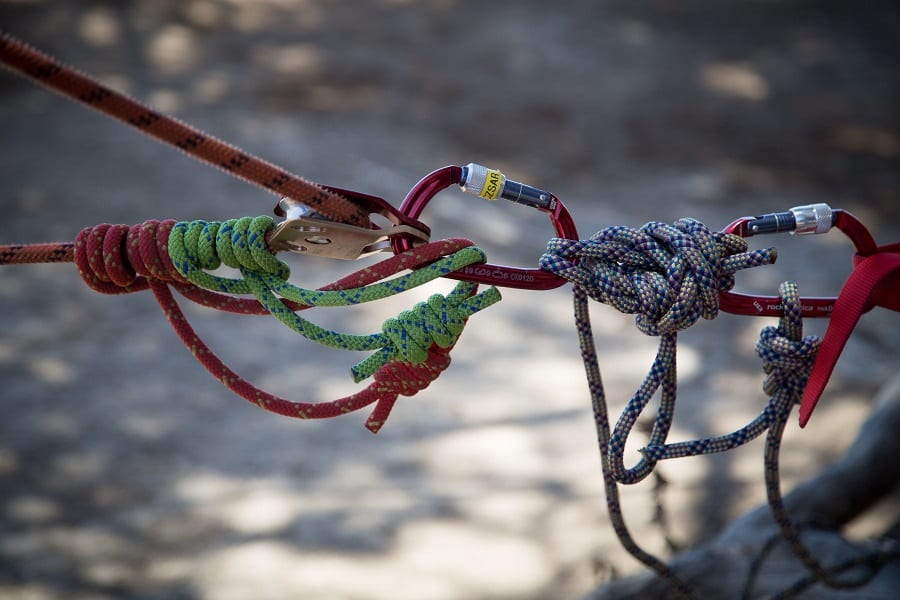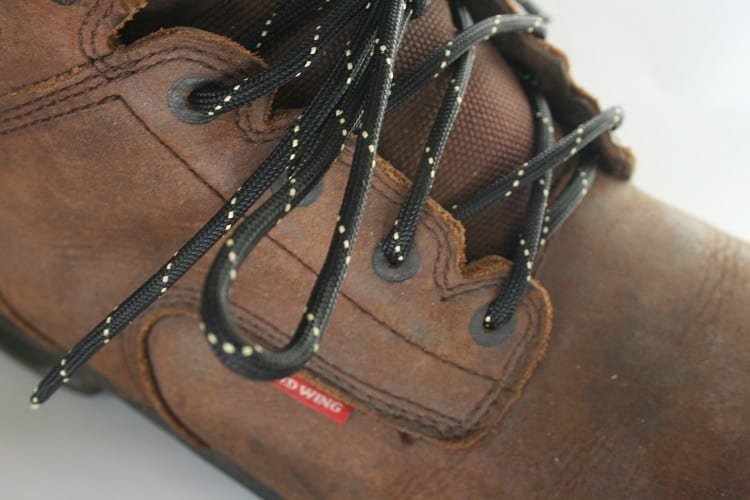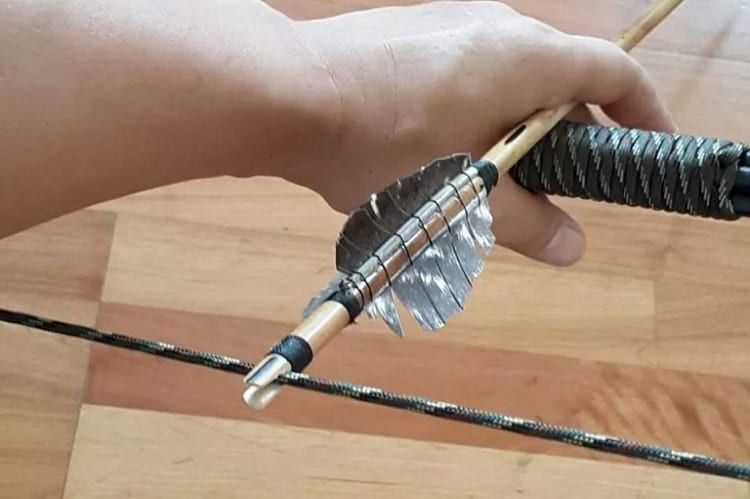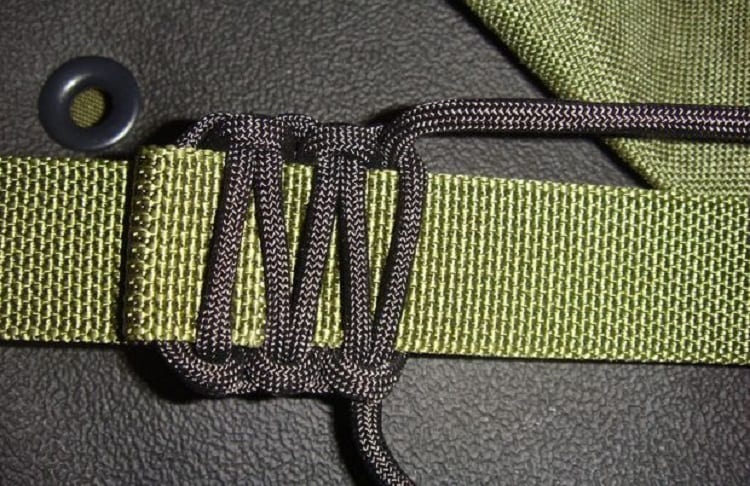Paracord (short for parachute cord) is one of the most versatile materials that you’re ever going to run into.
We don’t think they can really develop anything that fits the bill quite like paracord does, and there are far more uses for it than you might think. Both the nylon sheath and the inner strands of the paracord are useful.
Paracord uses come down to your own imagination and application. If you think it will work, try it out, and it most likely will (once you know what to expect from paracord). In survival situations, it’s one of the most versatile survival gear you have at your disposal and should be at the top of your list for a go-to survival tool.
We will show you how useful this fantastic bit of material really is with a few paracord projects.
If you’d like to see a graphical breakdown of the paracord uses, we got you covered:
1. Emergency Saw
Yeah, that’s how powerful your paracord can really be. We wanted to start with this one to show you just how useful it is.
You need to cut through plastic, whether it’s packaging or to cut zip ties that are keeping something closed?
You can unthread your paracord and work it like a saw by utilizing friction.

Run one end of the paracord through the place you need to cut, and hold both ends, working them back and forth to build friction on the plastic. Eventually, the plastic will slowly melt and separate.
2. Tie Wood Together
One of the best utilities for paracord is tying wood or bamboo together to create a stable stand for an emergency shelter. You can clear out some debris from the ground, lay some leaves down, and then piece tree branches together to drape an emergency blanket over.
Make two A-shaped stands with big branches, and use a paracord to tie them together. This is going to require some knotwork, so if you have that knowledge under your belt, this is going to be extremely useful.
With enough paracord, you could even craft a makeshift flat roof. Piece together enough sturdy branches or reeds, and use paracord to tie them all to a square frame (also made up of tree branches), and you have a viable, mid-term cover for your shelter.
3. Reserve Fuel Source
A lot of things burn, so what makes paracord so special?
Well, it all comes down to how slowly it burns. Some emergency paracord actually comes with a wick on the inside to burn for longer.
But even if that’s not the case, you can still use paracord to slowly burn in fire and keep the embers alive long enough to get some more fuel on top.
Use this time to forage for dry leaves and kindling, and you’ll be able to keep that initial fire burning without having to start it up again.
Ever the versatile material, paracord can also be used as a fire starter and comes in handy for the bow drill method. Paracord is great in a pinch.
4. Lace Replacements

You don’t want to walk in wet boots. Maybe you had to move through the rain, perhaps you woke up and your boots were rained on.
Whatever the case, you can’t walk in them, so strip those laces out and dry the boots over a fire, then pop in some paracord to replace those laces.
Paracord can be used as a long-term solution as well, so if you have older boots and don’t want to pay for laces, you can just strip a few paracords to be able to re-lace them up.
5. Pulley System
You’re on your feet with a big bug-out bag on your back, and the world as you know it is left behind you. It’s not just other people that you have to worry about: the wilderness is still dangerous.
You can use paracord as a pulley system to hoist your backpack up into a tree to keep it safe from predators. If you find a good tree to camp in for a few days, you can use this system to help bring your belongings up for the long haul.
But it doesn’t stop there. Grab pales of fresh water to run through a filtration system, and hoist them up to where you are. Use a paracord pulley to bring material up to make a roof on your makeshift treehouse. It’s ultimately useful.
6. Make a Paracord Hammock
This one can be a bit of a stretch, but you can make a hammock with enough paracord. The good thing is, it’s not just going to fit a specific dimension between two trees. It doesn’t matter how far apart they are because you’re the one making it.
With a coil of paracord, simple weaving patterns can create a comfortable and safe harness, which can then be turned into a hammock. If you’re unsure where you’re going to stay when you get out in the wilderness, or you didn’t have time to bring a tent, braided paracord can save the day.
We would recommend knowing the proper techniques to tie knots and how to layer paracord well before you venture out into the unknown. Some essential knots to know include the overhand knot, square knot, bowline knot, figure-eight knot, cobra knot, and monkey fist knot.
7. Fishing Line
Your line got tangled, or it was forgotten entirely. Thankfully, you have paracord. You can’t just sink an entire line of paracord in the water because it will spook fish into staying far away from you.
But you can cut one end off your paracord and then use one of the inner threads as a fishing line. No matter what color your paracord is on the outer sheath, you can be pretty sure that it’s white on the inside (otherwise it would be a waste of dye).
That allows enough light to pass through that makes it less visible to fish in the water. It won’t work as well in shallow water, but it will do wonders where it can sink a bit. Your best bet is to do small drop lines with hooks attached.
Furthermore, the inner threads can be tied together to create a fishing net.
8. Snares and Traps
You don’t know how long you’ll be out in the middle of nowhere during a SHTF situation. Well, you’ve got to eat, right? You can easily use 550+ paracord to make solid, quality snares and traps for birds, squirrels, and other small animals.
Remove the inner strands to make deadfall triggers, which are one of the most common mechanisms used in trap hunting. Alternatively, you can use these to hoist up rabbit traps from low-hanging branches. They make great pullets for counterweights.
9. Make a Bow and Arrow

This one is more involved but totally feasible. You find a quality sturdy branch that you can quickly whittle into a bow stock, and then you can use paracord to make the actual bow for it.
But what about arrows?
If you use paracord to create friction, you can seal arrows. Sealing arrows involves closing off the open-ended wood fibers that are left behind after sharpening an arrow with a knife.
If you don’t close the fibers, you’ll leave splinters and wood shavings in your wood, and nobody wants that. You don’t want the arrows to split. One other option is to wet the arrows and spin them over a fire for a short amount of time, but friction will also work.
10. Dog Harness

You have a trusty German shepherd or a golden retriever to help you out when SHTF. That’s good, especially if you train them properly, but what happens when you don’t have room to store an extra leash?
You make a harness out of paracord.
These have to be done with precise knotwork so you don’t create something that will tighten on your dog, but if you do this right, you can harness them up to help them lead you through the underbrush without pulling on you and dragging you down into the mud.
11. Cross Strap

You have a solid bug-out bag, but you have other things to carry apart from one backpack. Put them all over your shoulders, and use some paracord to make a cross strap, holding them all together.
This creates a center of gravity between all the straps/bags and gives you a specific point to focus your energy, so you don’t feel like a ton of bags are just cutting into your shoulders.
12. Knife or Axe Handle

Your knife has been through the ringer. Your survival axe lost its grip on the rubber coating on the handle. It happens, but you can tightly weave paracord around the handles to bring a tactile grip and restore those tools to their former luster.
This works universally, so paracord is the way to go if you need to create a handle on your telescopic handle shovel, pickaxe, or anything else you’re bringing with you.
Once you learn how to do this, you’ll be able to make handles or grips on plenty of other survival items. It sure beats paying for sticky-back attachable grips (and it’s more durable, too).
Paracord: The Survivalist’s Top Essential Item
Paracord rope will come in handy so many times in just about every survival situation you can think of. Now it’s just up to you to have enough on-hand that it’s actually useful.
A survival paracord bracelet, backpack straps, a paracord lanyard for your survival hatchet – there are so many ways to ensure it’s always literally on hand. Get on it.

